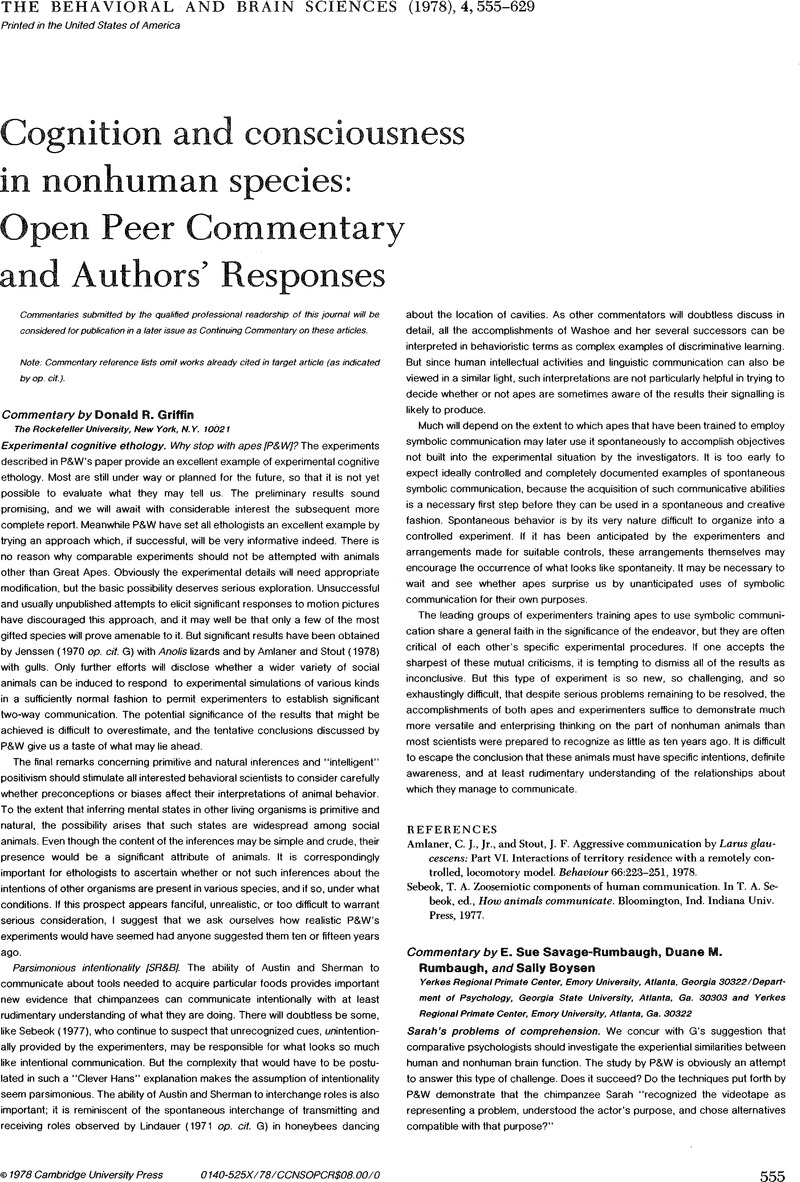Crossref Citations
This article has been cited by the following publications. This list is generated based on data provided by Crossref.
Umiker-Sebeok, Jean
and
Sebeok, Thomas A.
1980.
Speaking of Apes.
p.
1.
Schubert, Glendon
1982.
Infanticide by usurper hanuman langur males: A sociobiological myth.
Social Science Information,
Vol. 21,
Issue. 2,
p.
199.
LOSCO, JOSEPH
and
BAIRD, DONNA DAY
1982.
The Impact of Sociobiology on Political Science.
American Behavioral Scientist,
Vol. 25,
Issue. 3,
p.
335.
Schubert, Glendon
1983.
Evolutionary Politics.
Western Political Quarterly,
Vol. 36,
Issue. 2,
p.
175.
Schubert, Glendon
1983.
Psychobiological Politics.
Canadian Journal of Political Science,
Vol. 16,
Issue. 3,
p.
535.
Schubert, Glendon
1996.
What do apes think? What do humans think about other apes?.
Journal of Social and Evolutionary Systems,
Vol. 19,
Issue. 1,
p.
87.
Schubert, Glendon
1996.
Female choices: Sexual behavior of female primates.
Journal of Social and Evolutionary Systems,
Vol. 19,
Issue. 3,
p.
293.



